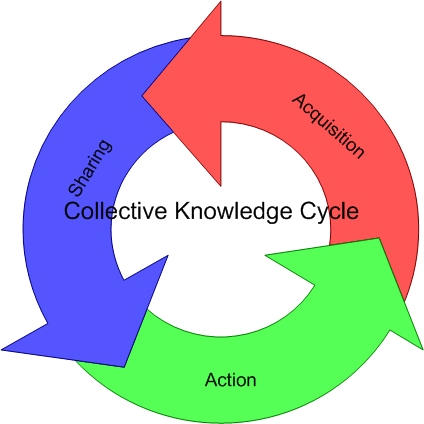
Collective Show 2010
Participant, 253 East Houston Street, NYC
September 15-26, 2010
Back in town, I am stumbling around. It seems I have walked into a season of alternative fever. In the demi-institutional sphere (institutions in our own minds) there is much excitement about the giant Exit Art survey, “Alternative Histories,” opening this Friday. The Lower East Side mini-alt Participant jumped the starting gun on the first big survey show of this history since 1981,* producing the “Collective Show.” It's a gathering of very recently formed art ventures.
There is 30 of these, wrangled into the storefront by a group called Silvershed. It's a dense, interesting exhibition, and the opening was full of young people I don't know. I can not call these “collectives,” however, since I believe this term should be reserved for cultural groups with instrumental intentions. “Collective” is too broadly used, and has become thereby denatured. I explain: The recent emergence – and by that I mean “popularity” throughout the mainstream of art study and practice – of collective formations in cultural work is primarily an outcome of the peaceful revolutions of 1989. At that moment, as socialist state-controlled culture infrastructures collapsed, artists sought to rescue the baby from the bathwater. They began to organize to do cultural work with a social purpose, work they called collective in conscious emulation of the heroic period of modernist revolution.
There is already a kind of initial Euro-American canon of these groups, laid out in a series of exhibitions since the mid-2000s. These were “Get Rid of Yourself,” in Weimar and Leipzig (2003 – that's the Former East, unsurprisingly) ; “Collective Creativity” (2005), organized by the Croatian curatorial collective What, How & for Whom at Kunsthalle Fridericianum (a Siemens Arts Program, which some found objectionable, despite that the curators were red diaper babies); “When Artists Say We” (2006), curated at Artists Space by Andrea Geyer and Christian Rattemeyer (the embrace of the word “curated” expresses already problems with this show); “Locally Localized Gravity” at the Philadelphia ICA (2007; a wussy U.S. follow-up); and more recently, the intriguing “Descent to Revolution” (2009) at Columbus College of Art & Design in Ohio.
The most likely model for the “Collective Show” is the X Initative, a very connected, decently funded, perfectly situated alternative mini-mall of art of art projects launched in the fomer Dia space. “Bring Your Own Art,” the “24-hour marathon” of democratic exhibitionism that took place at the X Initiative closed out that project. Apart from a lecture by Lotringer, that is all I saw there between my travels that year. This “celebration of the chaotic energies of art and a joyful subversion of hierarchies” was the closing event in a very interesting project to make use of the derelict Chelsea building that had served the Dia Foundation and seeded the Chelsea art district. I even missed the prime hours of that event, and walked through the ruined de-installed remains, even as the long-bearded Buddhist real estate agent and his crew closed in for a look around to see what they could do with the property. It seemed like a sorry end to the X Initiative's “Phase 3” – cultural democracy on a shoestring, and with a stopwatch.
Last year X Initiative produced “No Soul For Sale: A Festival of Independents” (2009), a lärmische mini-art fair which was pretty interesting, and international. The ex-Dia space has also hosted superman AA Bronson's Printed Matter-sponsored art book fairs, which have been spectacular circuses for the mind. (Dia in the past hosted Printed Matter for years in its space in Soho.) “Collective” seems like a sort of attempt to reprise that in a tiny space (relatively speaking) – in fact, one of the project, Primetime, used the same tape-on-the-floor demarking device that “No Soul” participants were penned into. This gang was cranking out catalogue-ish zines onsite, with a pile of donuts ready at hand. This I dug. I'm a bookish person, I guess – and making it on the spot is always intriguing... although it's not really new at this point – archive.org launched a print-on-demand bookmobile in '02.
Well, like I say, I just got back to town, and I really have no idea what is going on. Looking around I see the New Museum recently hosted a panel, “Negotiating the Urgency of Alternative Art Spaces,” part of their Museum as Hub series. Museum as what? Hubcap? Don't good-hearted teens steal those? Maybe not. Well, they do now – see Tabacalera in Madrid, and Gängeviertel in Hamburg, two recent artist occupations carried out with government approval. (In the first case it was direct; in the second, a grudging acceptance of a strategic occupation.
(Jesus, what's he talking about??) Forget it. I had to post this before the show closes – it's only up for 10 days. And I'm acting like a daily reporter. I'm not very good at it. Please correct me.
* Jacki Apple's 1981 Alternatives in Retrospect surveyed the “classic period” in Soho, 1969-1975 at the New Museum when it was on 14th Street, and made an underground hero of Gordon Matta-Clark.
LINKS:
Alternatives in Retrospect (1981)
http://www.leftmatrix.com/alternativesinretro.html
The Collective Show at Participant
http://www.participantinc.org/
The image is the top Google image search for “collective” on the day this was written. From Knowledge Management News website, kmnews.com. The goofy Village Voice-style headline is an allusion – to the GTO's song, “Circular Circulation.”